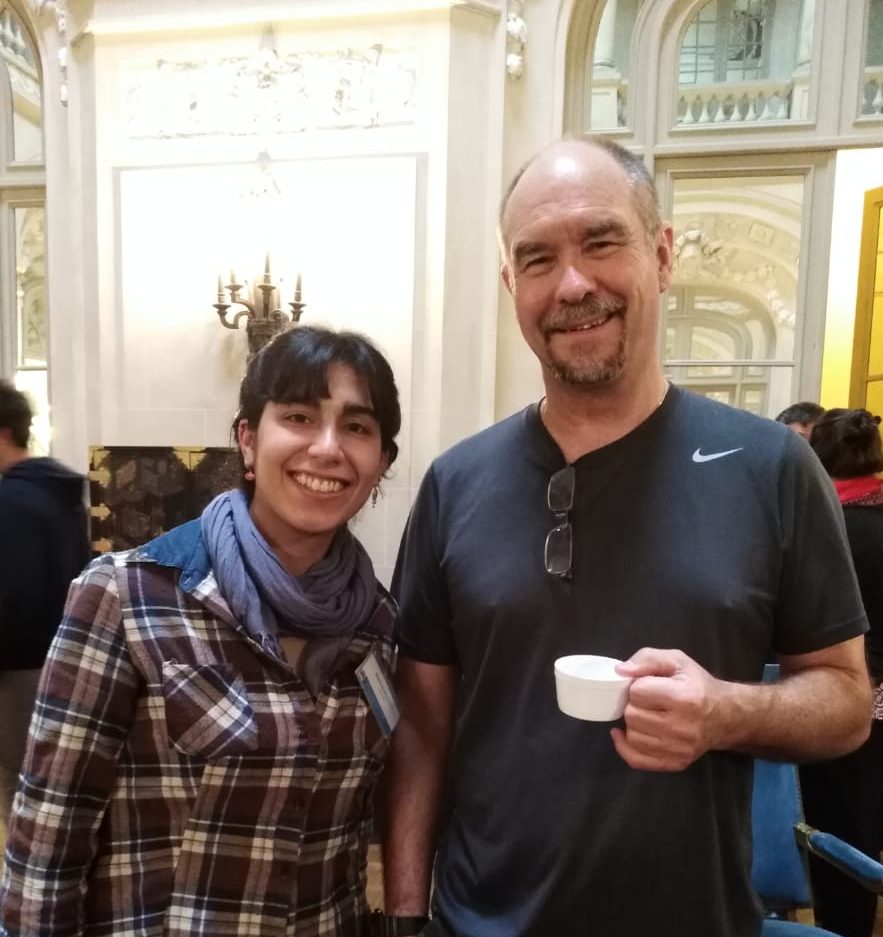by Martina Mascioni (FjordPhyto Scientist)
This past week (23 – 29 September 2018) the spring course on “Biological Processes in Antarctic Ecosystems” took place in the city of Buenos Aires, Argentina. It was a course for graduate, PhD students, and post-docs whose research interests are related to Antarctic ecosystems. Students from South America — Argentina, Brazil, Chile, Peru, and Colombia — and also from India and Malaysia came together for an intense week of work and sharing experiences. The course was even held at the San Martin palace: Yes, a real palace! (Cover Photo: Graduate student Martina Mascioni and Dr. Craig Smith enjoying their time at the course.)


AnT-ERA stands for Antarctic Thresholds – Ecosystems Resilience and Adaptation. This SCAR science project’s main goal is to facilitate the science required to examine changes in biological processes, from the molecular to the ecosystem level. In this particular case, expert researchers from AnT-ERA come together to teach classes from all topics related with Antarctic Ecosystems.
Some Antarctic ecosystems are undergoing very rapid environmental change, whereas others appear to be relatively stable. It is essential to understand the current functioning of biological systems to determine thresholds and predict upcoming ecosystem services.
~ AnT-ERA mission statement
Students had a really good time learning about topics as diverse as: Antarctic biodiversity, benthic ecosystems in Antarctica, adaptations of Antarctic marine benthic organisms, protein dynamics in changing environments, climatic controls on sedimentation, DNA barcoding, ecology of Southern Ocean predators, and a lot more!

The structure of AnT-ERA with three main themes – colored – in the center.
Abstract – from AnT-ERA Implementation Plan:
Stresses on Antarctic ecosystems result from global climate change, including extreme events, and from other human impacts. Consequently, Antarctic ecosystems are changing, some at a rapid pace while others are relatively stable. A cascade of responses from molecular through organismic to the community level are expected.
The differences in biological complexity and evolutionary histories between the polar regions and the rest of the planet suggest that stresses on polar ecosystem function may have fundamentally different outcomes from those at lower latitudes. Polar ecosystem processes are therefore key to informing wider ecological debate about the nature of stability and potential changes across the biosphere.
The main goal of AnT-ERA is to facilitate the science required to examine changes in biological processes, from the molecular to the ecosystem level, in Antarctic and Sub-Antarctic marine, freshwater and terrestrial ecosystems. Tolerance limits as well as thresholds, resistance and resilience to environmental change will be determined.
Three key questions have been identified.
- How are Antarctic organisms adapted to current and future environmental conditions and what is the genetic basis for their life history, organism plasticity and physiology?
- How does environmental change affect population performance and species interactions; e.g., how do species traits impact community stability, key ecosystem processes, and the identities of ecological winners and losers?
- What are the likely consequences of a changing environment for key ecosystem functions and services?
AnT-ERA combines cutting edge bottom-up and top-down approaches in situ, in the laboratory (e.g. via ‘omics’) and in silico (e.g. modelling and database mining).
AnT-ERA is fundamentally based on preceding international projects, as well as national programmes that accumulate experience, and will particularly support newly emerging national programmes and early career scientists. AnT-ERA does not only appreciate, but it lives from appropriate contributions from, and cooperation within, the entire scientific community.
Wondering how AnT-ERA interacts with the other Antarctic-focused projects? Check out the schematic below.

For more information, head on over to the AnT-ERA website or peruse the course PDF here AnTERA_SpringC_Call_171116. To subscribe to the AnT-ERA mailing list use: http://lists.scar.org/mailman/listinfo/antera

